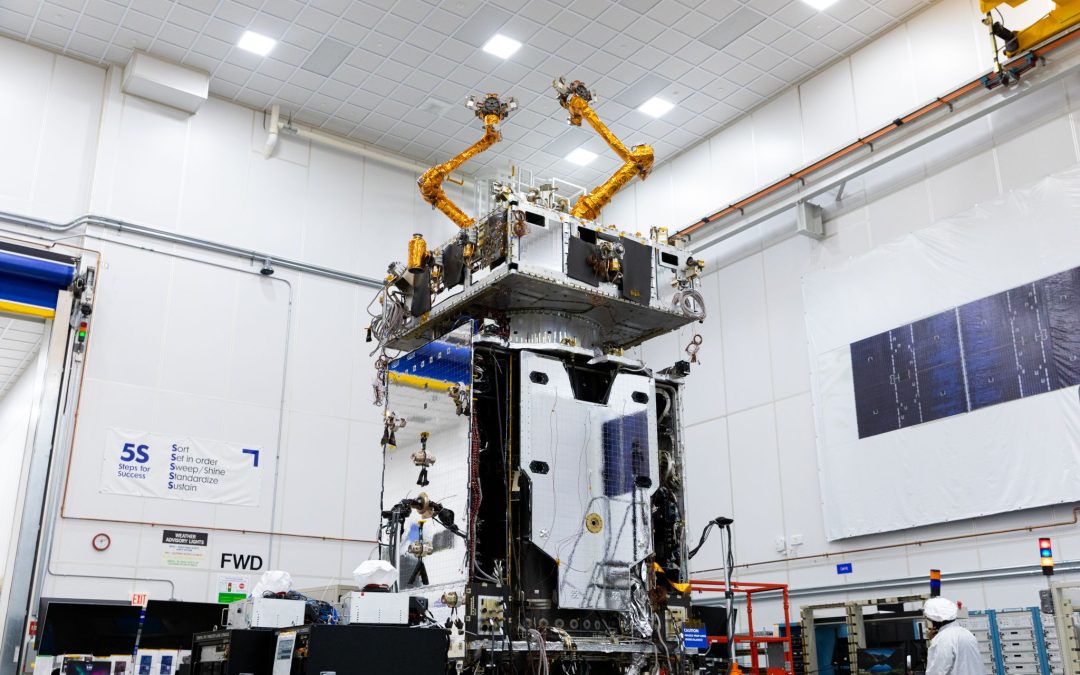[Image credit: Northrop Grumman]
During four years as a Program Manager at DARPA, 2014-2018, I led a program called Robotic Servicing of Geosynchronous Satellites (RSGS). We built a complex robotic module that was to become the payload for a satellite that would go to GEO and perform robotic tasks there. Integration of this incredibly complex payload was conducted at the Naval Research Laboratory in Washington, DC. Northrop Grumman eventually became DARPA’s commercial partner in this, and is using the robotic module to provide the capabilities for its Mission Robotic Vehicle (MRV). At long last, f all goes well, MRV, with RSGS installed, will launch to GEO in February next year.
RSGS is the culmination of 23 years of research and development of space robotic systems by DARPA. First there was the highly successful Orbital Express experiment that flew in 2007, demonstrating autonomous docking, refueling and modular replacement by a robotic arm. The surrogate customer satellite in Orbital Express was highly modified in order to allow these operations. My own involvement began in 2003, with a laboratory program called Spacecraft for the Universal Modification of Orbits (SUMO). The point of that demonstration was to show that useful services could be provided to today’s satellites, without requiring modifications (the “Universal” in the name). The success of that program by 2005 led to the development of a highly capable space-suitable robotic arm, and years later to the RSGS program.
Last month, Northrop Grumman published the picture of MRV in its high bay in Dulles, Virginia. The RSGS payload was completed a year ago, and NRL conducted all of the environmental testing required for a space system. It was then shipped to the Dulles facility, where it was integrated onto a Northrop Grumman Geostar-3 bus to become MRV. To my surprise, it was then shipped BACK to the test facility at NRL for even more testing. Ultimately, it will be delivered to the launch site and sent to GEO on a Falcon 9 launch vehicle. Falcon 9 can only place this heavy spacecraft in a transfer orbit; MRV must then use its own onboard propulsion to complete the orbit raising to enter GEO. This will require several months, and will also expose MRV to intense radiation as it passes through the van Allen radiation belts. But some time in 2027, we can expect news of robotic activities being conducted on satellites belonging to Northrop Grumman’s customers. It has been announced that GEO operators Intelsat and Optus are customers for life extension by MRV.


Recent Comments